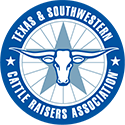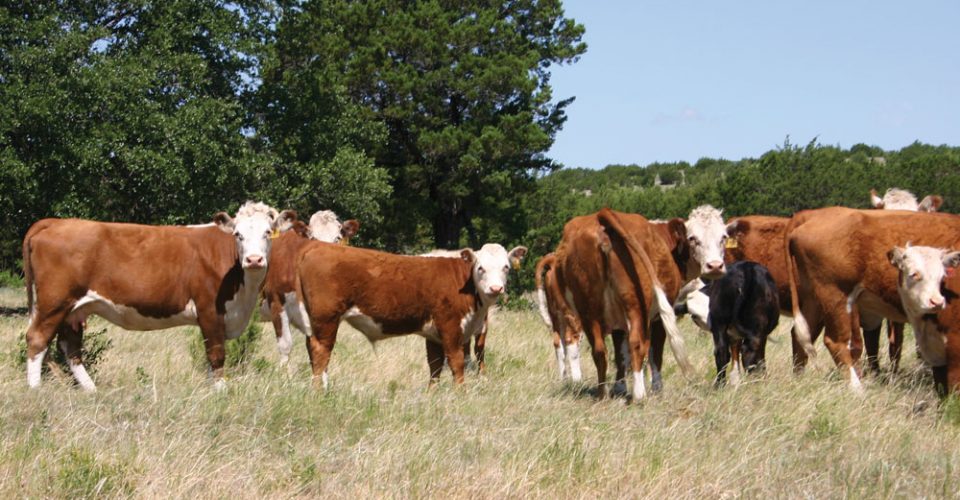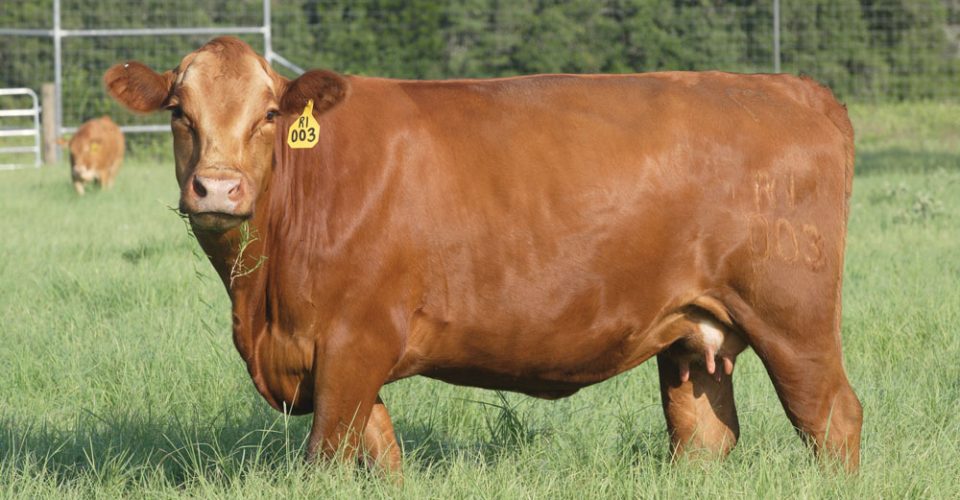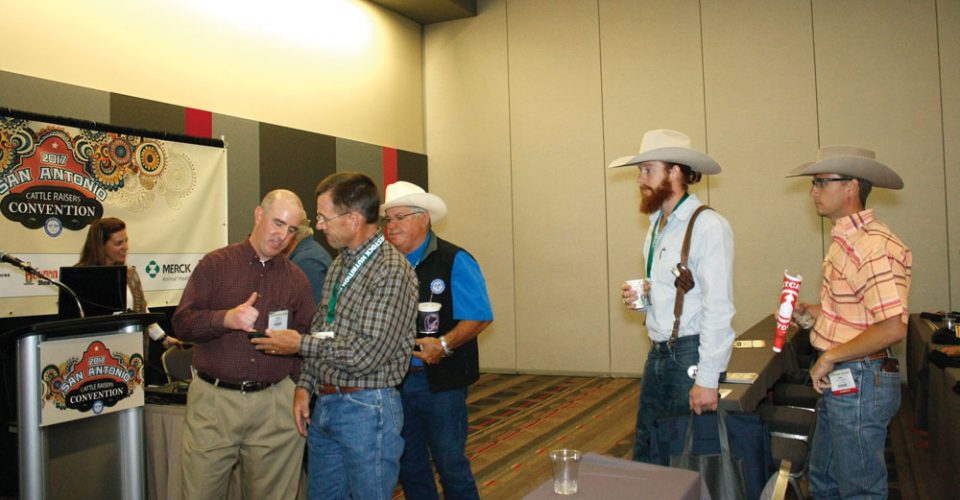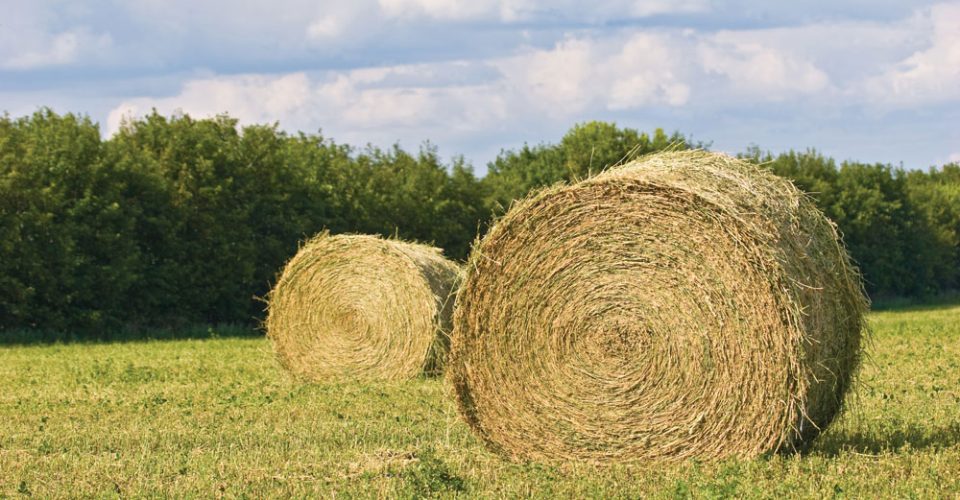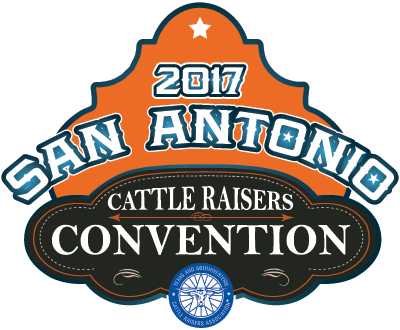14%, 20%, 40% Range Cubes: What’s Right for My Herd?
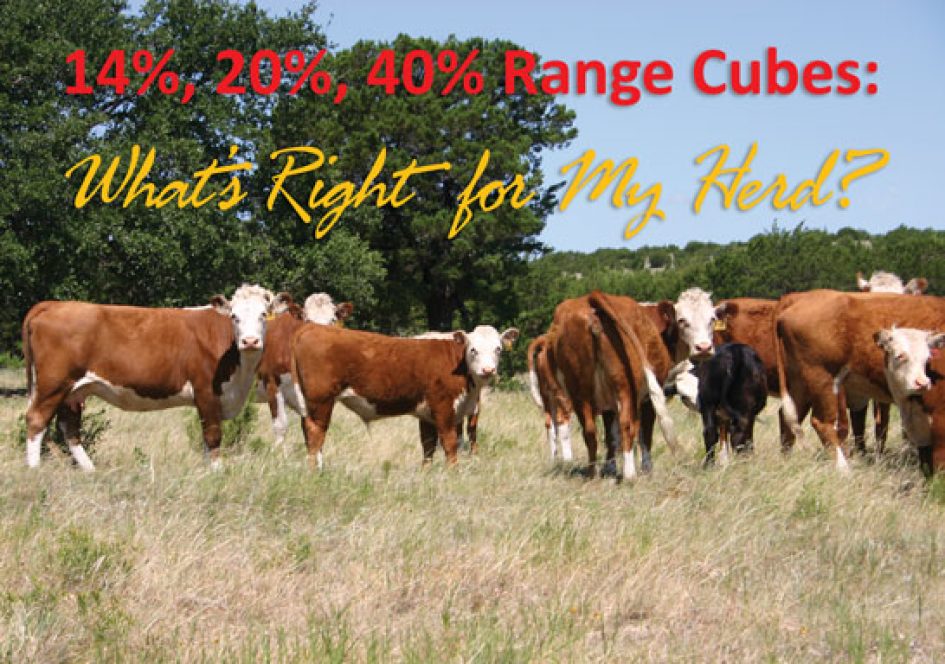
By Ellen H. Brisendine
At some point in a cow’s life, she may need supplemental feed to keep her healthy and productive. The forage in the pastures may not be meeting her nutritional needs, the hay may be low quality, or she may be at that point in the reproductive cycle when gestation and lactation drain her physical resources.
Consider a prudent investment in extra protein or energy to help her give you the kind of calf you want. How can you tell when a cow needs more? How do you pick the right range cube at the best price?
Dr. Jason Banta answered these questions at the 2017 Cattle Raisers Convention. Attendees packed the classroom to learn about when to use supplemental feeds and how to pick the right ones for their conditions.
This article is an excerpt of his hour-long session. To learn about body condition scores (BCS), see the sidebar articles accompanying this story — Banta’s suggestions on testing hay for protein and total digestible nutrient (TDN) content and on evaluating forage quality based on the characteristics of manure and his descriptions of body condition scores (BCS).
Once you know what the cow needs, when she needs it and what she’s getting from hay and forages, you’ll know what types of supplements to price.
Include labor and equipment costs when you develop the budget for a supplemental feed program, because “every day is the way these supplemental feeds are meant to be fed. If you feed them less frequently, you’re going to get less performance out of them, plus you can cause some digestive problems on those cows,” he says.
Protein, energy and both
Banta breaks supplements into groups that provide protein, energy, or both. “All feeds are going to have both protein and energy, but from a cost or concentration standpoint, they’re better suited for one or the other.”
He cautions, “In any of these energy feeds we need to gradually increase the level in the diet. We are going to start off slow and gradually increase the amount being fed.”
Banta uses the term range cube to indicate supplemental feed that comes in pellets that are about 5/8 to 3/4 inch diameter.
Banta considers 12 to 14 percent protein cubes to be energy sources.
Twenty percent protein cubes provide energy and protein.
Forty percent cubes are considered protein cubes.
The math Banta uses to determine the per-unit cost of protein or energy can be applied to any ingredient needed at the ranch, such as insecticide or fertilizer.
In his example, Banta starts with a 50-pound sack of range cubes that are 20 percent protein (50 pounds x 20 percent = 10).
“That tells me I have 10 pounds of protein in that sack.”
Divide the cost per sack by the pounds of protein per sack.
In this example, the 50-pound sack costs $8.40, ($8.40 / 10 = 84) which comes to “is 84 cents per pound of protein.”
Apply this formula to a 50-pound sack of 38 percent protein range cubes.
That sack (50 pounds of cubes x 38 percent protein = 19) contains 19 pounds of protein. Divide the cost per sack, “in this case, $10.85, by the pounds of protein in the sack and see the cost per pound of protein is 57 cents.”
Using this formula, you may find the more expensive sack may actually be providing the cheaper unit of nutrition. “So we spend a little money and save more in the long run,” Banta says.
Use the same technique to determine the price of the energy content or TDN of those cubes.
“When we run through our math, the 20 percent cubes are 24 cents a pound for energy and the 38 percent protein cubes are 31 cents a pound for energy. If you want an even quicker way than having to get the pencil out, see which one has the most TDN,” he says.
If the lower cost sack of range cubes has the higher percent of TDN, then “I automatically know it’s cheaper per unit of energy. We want to pick the one that’s going to be the cheapest to provide what we need from a nutrient standpoint,” he says.
Optional supplements
Banta is often asked about feeding supplements other than range cubes.
He says that instead of a low-protein cube, “corn would fall in that category as an energy source. If we’re feeding it in a cow-calf operation, I recommend that you use whole corn, not flaked and not ground — whole corn. You’re going to see some of it in the manure patty, but don’t worry.” He says the loss of whole corn through digestion is minor.
Other feeds in the protein-and-energy category are “corn gluten feed, distillers grains, winter pasture, if you were planting any of that, or whole cottonseed,” he says. He cautions ranchers to restrict whole cottonseed to no more than 25 percent of the diet for females. Do not feed whole cottonseed to developing bulls.
Other protein supplements are things like cottonseed meal, soybean meal, alfalfa and limited grazing of winter pasture.
For all of the supplemental feed options, cubes included, Banta advises ranchers to “gradually increase how much you have in the diet. For a mature cow, this means starting her off at about 2 pounds, maybe 2 and a half pounds a day. Gradually build her up from there. Don’t start at 5 to 8 pounds per day.”
Ranchers who don’t have the time or the ranch labor for daily feeding might consider the convenience of putting tubs in the pasture. Make sure your cattle are in the middle range of the body condition scores if you go this route.
“Tubs are not designed for thin cows,” Banta says, “because the intake is generally going to only be about a half-pound to 1-1/2 pounds a day. Tubs work better on cows that need just a small amount of protein supplement.
“If you’re going to look at the tubs, I recommend you use them year round. Since the intake is so small, we want to keep those cows in good shape all year. Even when grass is good, they’re putting on some extra weight from the supplemental feed in the tubs. Then, when the forage is not as good, we have a little reserve.
“This will cost more money in the long run, but there may be some savings through convenience,” he says.
A ton of 20 percent protein supplemental feed in the tub formulation is about twice that of a ton of 20 percent protein cubes. “There’s a charge for that convenience,” Banta says.
In all the calculations for a supplemental feeding program, remember to include the cost of the equipment needed to handle the feed and the cost for the labor to provide the daily feeding. A little extra feed when forage and hay quality are low, or to boost a thin cow into a better BCS, may pay off in the form of an extra, healthy calf at weaning. ❚
“Range Cubes” is excerpted from the July 2017 issue of The Cattleman magazine.
